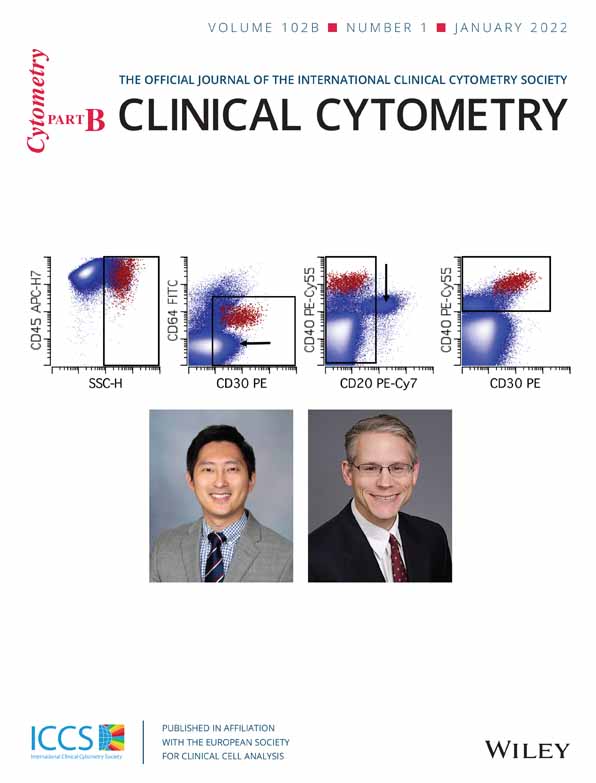Letter to the editor with regard to the article entitled “Automated leukocyte parameters are useful in the assessment of myelodysplastic syndromes”
We read with interest the table of contents of the “Early View—Online Version of Record before inclusion in an issue” of Cytometry Part B, Clinical Cytometry that you recently posted. We were especially caught by the publication of Shestakova et al., that we had not noticed as preview, reporting on the interest of automated leukocyte parameters to disclose patients with myelodysplastic syndromes (MDS). This topic is clearly of great interest, owing to the increased life expectancy and thus increased likelihood to see patients with pre-leukemic conditions in our routine screenings.
This work, relying on Beckman Coulter analyzers, seems to have only considered VCS parameters in neutrophils. We were surprised to see that this report omitted a MDS-suspicion score that was previously recently published with the same idea of detecting pre-MDS or MDS from white blood cell count (WBC) assays in routine laboratories. Indeed, Boutault et al. (2018) reported in 2018 on a score allowing for MDS suspicion on Sysmex instruments. Data from this study, that included more than 500 individuals, showed that research parameters allowed to propose a significant score, with much stronger positive and negative predictive values than those shown in the paper of Shestakowa et al. This study proposed to use mean corpuscular volume, absolute neutrophil count, median neutrophil complexity and width of dispersion of the events measured (Ne-WX). Even more recently (Ravalet et al., 2021), but after Shestakowa's preview issue, another study using data acquired in Beckman Coulter instruments was published in Cancers. In the latter, Ravalet et al., through repetitive assessments, identified 10 parameters found to provide a strong likelihood suspicion of MDS. It is important to note that these strategies and scores ultimately should lead to the morphologic examination of a blood smear, itself guiding or not bone marrow aspiration and additional explorations to support the diagnosis of MDS.
We feel that Cytometry Part B readers should also be aware of these two seminal studies strengthening the message of Shestakova et al., that is, that white blood cell count automated instruments may provide more information than that expected in routine laboratories, especially in suspecting MDS in elderly patients.




